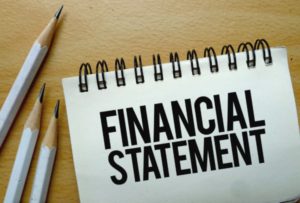The new lease accounting standard is intended to increase transparency and comparability among organizations by recognizing lease assets and lease liabilities on the balance sheet and disclosing key information about leasing transactions. Since it applies to most leases and subleases, with limited exceptions, e.g., leases of intangible property; leases of minerals and biological assets, including timber; leases of inventory; and leases of assets under construction, private companies will be required to disclose all contracts, or portions of contracts, granting control of the leased asset for a specific period of time.
granting control of the leased asset for a specific period of time.
The following are major changes required by the new lease accounting standard:
- Leases must be classified as either finance leases, formerly referred to as capital leases, or operating leases. To be categorized as a finance lease, the lease must meet at least one of these criteria:
- The lease term covers most of the asset’s remaining economic life;
- The asset is specialized for the lessee’s use;
- The present value of the sum of the future minimum lease payments exceeds “substantially all” of the fair value of the asset;
- The lease either:
- Transfers ownership to the lessee at the end of the lease term, or
- Gives the lessee the option of purchasing the asset.
- The rules for operating leases depend on the term of the lease; the first determination that must be made.
- Short-term leases are leases that run a term of 12 months or less. If the lease is deemed a short-term lease, the lessee may be able to recognize the lease payments over the lease term on a straight-line basis without having to include it on the balance sheet.
- Long-term leases are treated differently. For example, lessees will be required to record lease assets, i.e., the lease liability adjusted for certain items such as prepayments and initial direct costs, and lease liabilities, i.e., the present value of lease payments, on their balance sheets.
- The following key terms should be understood before your contracts are reclassified:
- Right-of-use asset. The right-of-use asset pertains to the lessee’s right to occupy, operate or hold a leased asset during the rental period.
- Embedded lease. Contracts sometimes have leases embedded in them. For example, a service contract that specifies the use of specific assets contains an embedded lease.
Embedded leases are subject to the new lease accounting standard, which states: “A contract is or contains a lease if the contract conveys the right to control the use of identified property, plant, or equipment (an identified asset) for a period of time in exchange for consideration.” - Discount rate. The rate used to present-value the future lease payments to calculate the lease liability.
The accounting and disclosure requirements under the new rule are complicated. They require extensive evaluation of lease contracts, including:
- Taking inventory of every lease a company has signed.
- Categorizing and classifying leases as operating leases or finance leases.
- Identifying and disclosing lease and non-lease components.
- Aggregating and reporting relevant terms such as weighted-average discount rate and weighted-average remaining lease terms.
- Preparing and summarizing amortization schedules.
- Determining which internal controls should be revised and where new ones are needed.
Performing the many analyses needed for compliance is both time-consuming and complicated. Companies should be sure they have the guidance, tools, and technology to help ease the process initially and in the future.